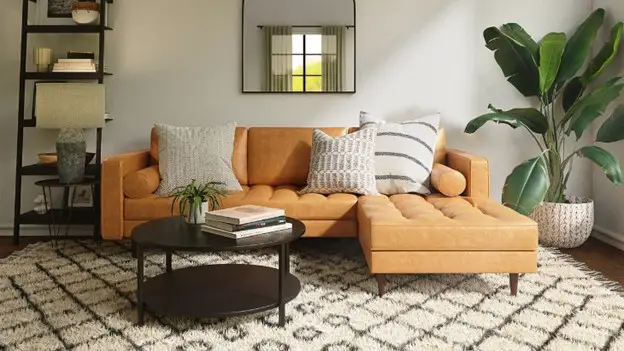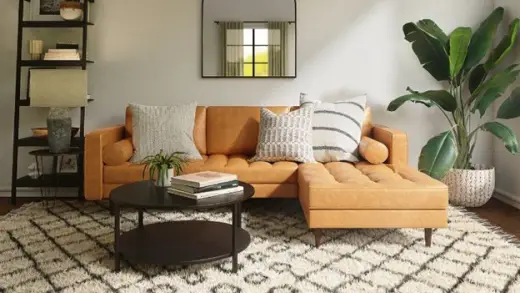Home modifications for blind or visually impaired advice, House guide, Property interior design tips
Home modifications for blind or visually impaired
14 October 2021
Everyone loves the comfort of their home; that’s the place where you feel the safest. But, people living with low vision need to make a few changes in their homes to get that comfort and sense of safety.
How to design a home for a blind client?
There are ways that interior designing with a bit of modification can make your house, a home. Designing a home with someone with a vision problem is tricky. But, since so many people around the globe have some kind of an eyesight issue, it’s important we do something about it. We are going to tell you a few tips for accessible home design for people living with visual impairments. Making the following changes will allow blind or visually challenged folks to move independently in their house.
Mind the location
While it’s important to make changes around the house, one must also pay attention to where the house is located. Choose the safest area possible as blind people are more vulnerable to crimes. Make sure you don’t end up in a rough neighbourhood.
If possible, pick a place near to the relatives of your blind client so they can get immediate help when needed. Install security doors around the house to reduce the chances of robbery.
All the basic amenities should be nearby the house. As people with partial or severe blindness are eligible for an annual free eye test from the NHS, the location should have a local optician nearby.
Interiors
We all love to do things all by ourselves, without taking help from others and visually impaired people are no different. They love to be able to move around the house without having anyone guiding them.
Use brighter colours that are easier to see. Illuminate the staircase and other parts of the house that are more dangerous than other areas. The next thing you need to make sure of is that the house is nicely lit. Use the right type of artificial lighting and allow as much natural lighting in your home as possible.
But, if you don’t have any severe eyesight issues but are only sensitive to light, then you should avoid exposure to blue light. Avoid home lights that emit blue light and use tinted glasses indoors. You can buy them from online glasses shopstores and help your sensitive eyes.
Arrange the furniture
Minimize the number of furniture and side tables at your home. These only work as obstacles for people with low vision increases the risk of tripping. Remove unnecessary furniture to get ample space around the room to move freely.
Also, leave the hallways and walkways clear for easy navigation. Do not change the furniture settings around the house once the person gets used to it.
Avoid using small coffee tables as the blind people might stumble over them and take a fall. Your furniture shouldn’t have sharp corners to avoid the risk of serious injuries.
Also, remove any slippery rug on the floor and if you’re using a rug, tape down the corners so it doesn’t slip. The colour of the furniture should be contrasting to the walls and floor so they don’t blend in the background.
Even when you have slight refraction in the eye and wear prescription glasses, you can still make home modifications to cater to your individual vision needs.
Modifications in the kitchen
The kitchen is the most visited part of the house. Some people love to cook or eat and we all do the dishes. But, when designing a kitchen for someone visually challenged, the bigger, the better.
Make sure that the sink and other appliances are accessible to the blind. You can even install smart appliances such as a talking microwave and use colourful chopping boards to make them easier to find or use.
The cabinets in the kitchen should be labelled in different colours. And if they can’t see colours, then you may also use braille indicators. Provide different sizes of measuring spoons or cups to facilitate cooking for the blind.
Consult with the person before arranging things in the refrigerator. And once the arrangement has been done, it should not be changed.
Bathrooms
The bathroom is one of the most dangerous areas in your house. The wet floor and solid fixtures increase the risk of slipping and hurting yourself.
Install supportive handlebars in the bathroom to give ample support to the blind. And instead of the regular white toilet seat, use the one with a bright colour. Use non-slip flooring in the bathroom and make sure that the area around the sink or the seat is brightly lit.
Glare is the biggest problem for people with low vision. So, you better not use shiny flooring or bathroom tiles. Place your mirror in a way so that it doesn’t reflect light and bother the person’s eyes. Provide storage cabinets in the bathroom so the place remains tidy and there’s nothing lying on the floor.
Home safety for the visually impaired is the most important thing. With the home modifications mentioned above, you can make a safer and more comfortable place for the blind.
Comments on this guide to Home modifications for blind or visually impaired article are welcome.
Glasgow Building Designs
Glasgow Architecture Designs – architectural selection below:
Comments / photos for the Home modifications for blind or visually impaired advice guide page welcome

